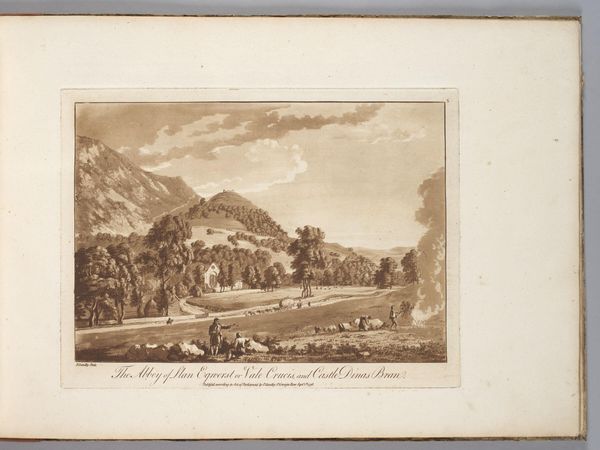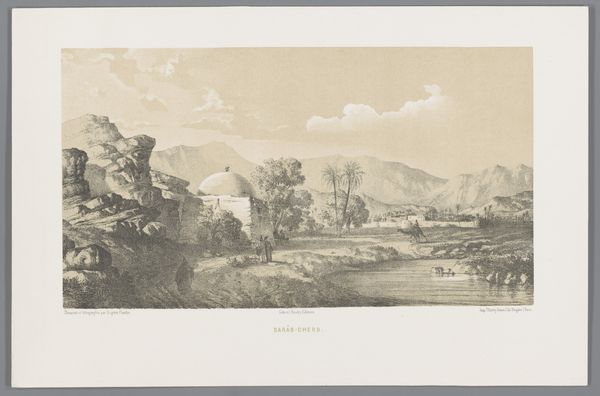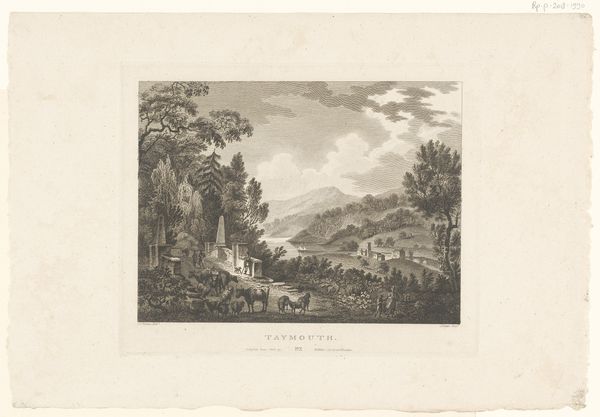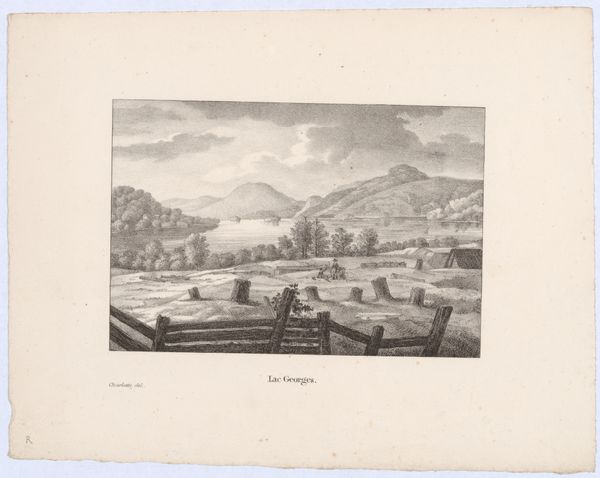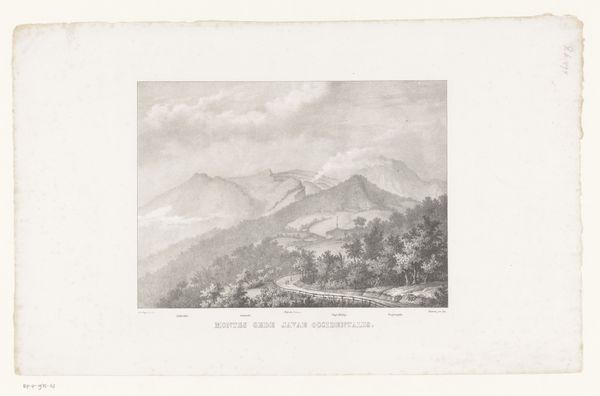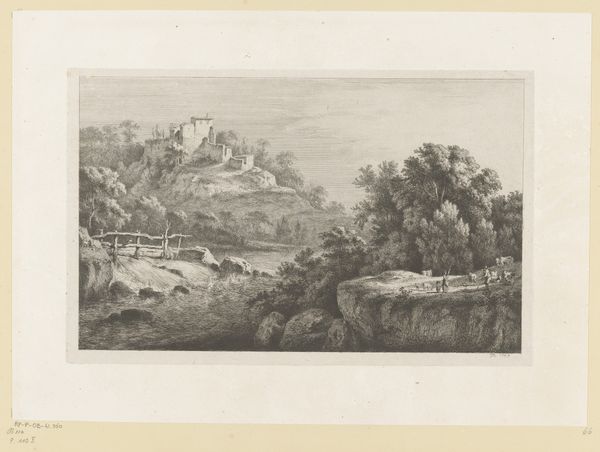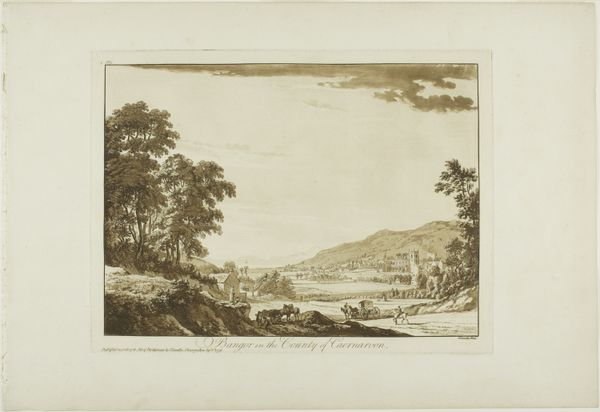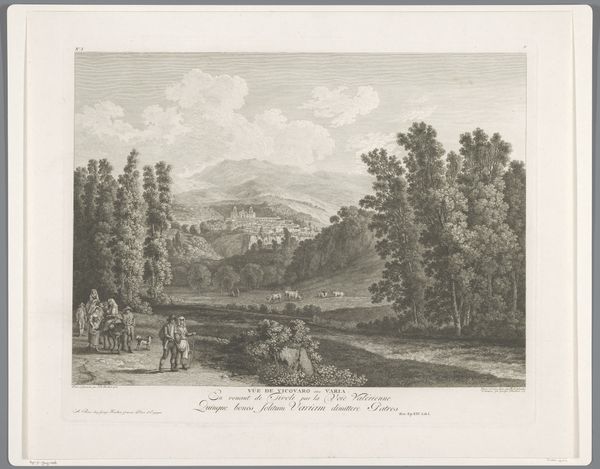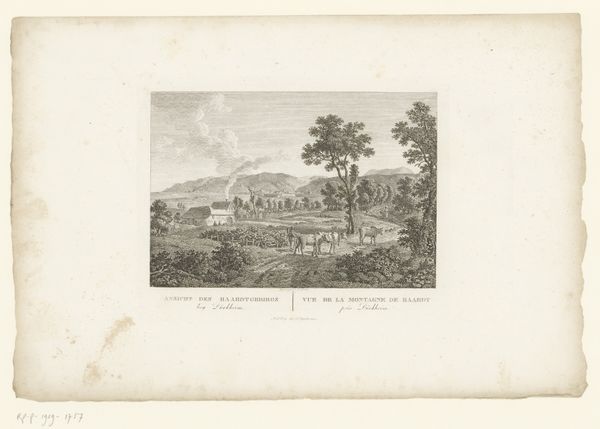
The Abbey of Llan Egnerst or Vale Crucis, and Castle Dinas Bran 1776
0:00
0:00
Dimensions: 239 × 315 mm (plate); 320 × 463 mm (sheet)
Copyright: Public Domain
Editor: So, this is Paul Sandby's "The Abbey of Llan Egnerst or Vale Crucis, and Castle Dinas Bran," made in 1776. It's a sepia-toned etching that gives the whole scene a kind of nostalgic feel, almost dreamlike. It reminds me of idealized landscape paintings of the era. What do you see in this piece? Curator: What immediately strikes me is the strategic romanticizing of rural Britain through Sandby's eyes. It's seemingly picturesque, but let's unpack its social context. The Abbey, the Castle, the working class, were all part of a changing British identity and class structure at the end of the 18th Century. This work normalizes those emerging new and fixed social roles in relation to both ancient history and recent history. Editor: That’s an interesting way to think about it, not just as a pretty scene, but also an observation on British identity and social changes. What about the ruined abbey itself? Does that play a role? Curator: Absolutely! Ruins were a big part of the Romantic era's fascination with the past and served as symbols of impermanence and lost power, as well as contemporary political changes regarding wealth distribution among powerful landowners. But whose power, and at what cost, do these images conceal in favor of constructing an ascendant British brand? Who is allowed to belong in this "pretty scene"? Where is that belonging defined? Editor: So you're saying it isn't just a celebration of the landscape but also a commentary, or even perhaps a kind of… justification for power structures? Curator: Precisely. Sandby, through this romantic lens, participated in constructing and reaffirming notions of Britishness, ownership, and power, by emphasizing only a limited and exclusionary image of its past. What do you make of the limited range of browns and tans? Editor: Well, it initially gives it a sense of historical distance, like an old photograph. Now, though, I wonder if that sepia tone is also part of that visual construction you were describing, helping to idealize this view. Curator: Exactly! We can appreciate the technical skill while also examining the image's embedded social messaging, the very same messaging that, repeated throughout history, informs biases today. I think this tension between artistic beauty and the reinforcement of ideology is what makes it so compelling for study today. Editor: I hadn't considered that aspect before, I’m looking at it completely differently now!
Comments
No comments
Be the first to comment and join the conversation on the ultimate creative platform.
